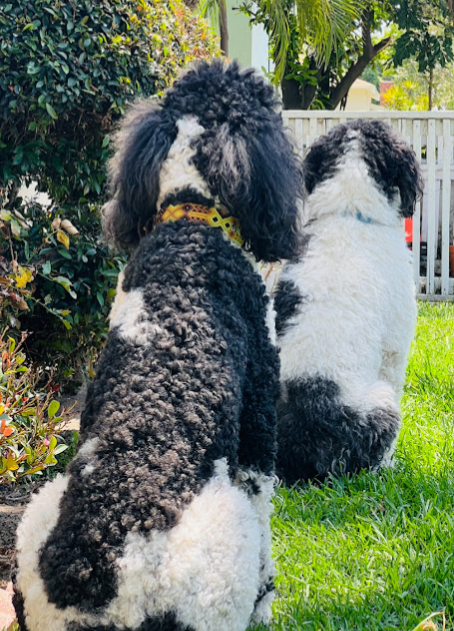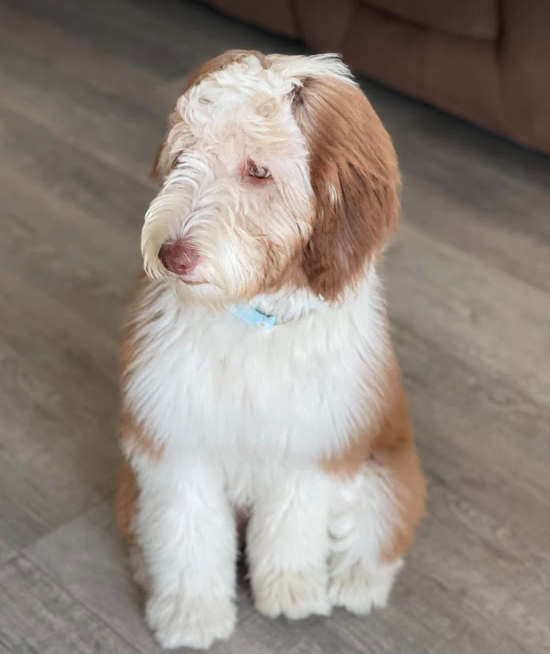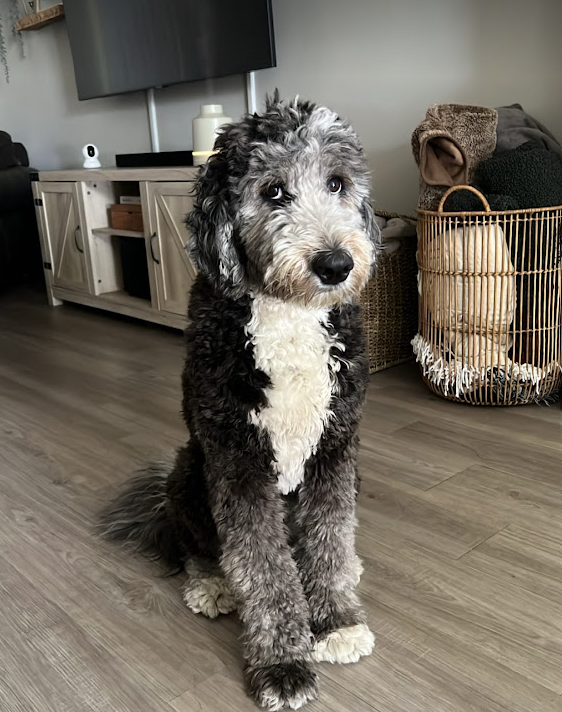If you’re interested in one of our sheepadoodles, click on this link for a list of available puppies. 🐏🐩
Hey there, fellow dog lovers! 🐾 Are you ready to dive into the world of Sheepadoodles? Trust us, they’re not only cute but super smart and healthy too! 🌟 But, just like any other dog, they need a little extra TLC to stay in top shape! 💪
So, grab a cup of coffee ☕, get comfy, and let’s explore all things Sheepadoodle health! 🐶💕
Sheepadoodles are generally healthy dogs since they are a mix between an Old English Sheepdog and a Poodle. By mixing the two breeds, genetic problems that could be passed on through purebred dogs may be minimized in mixing the two breeds. However, there are some common health issues in sheepadoodles that prospective and current owners should be aware of.
A Dive into a Sheepadoodle Health
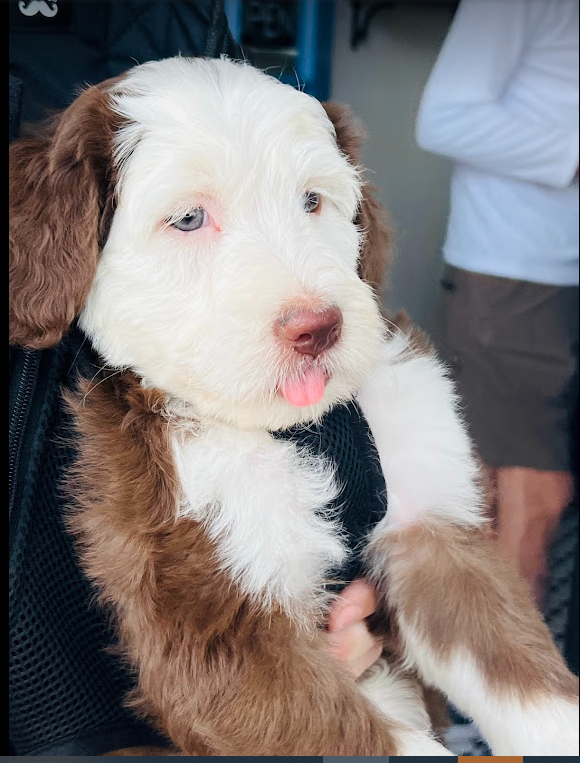
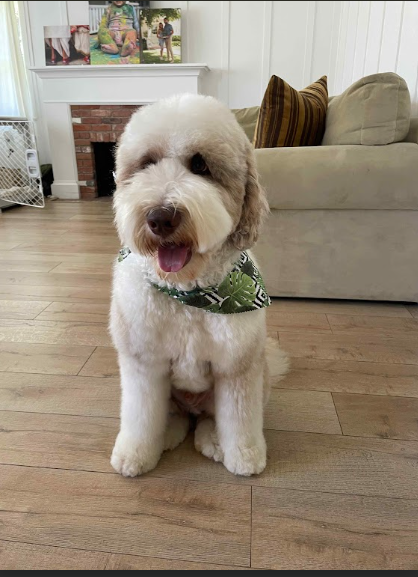
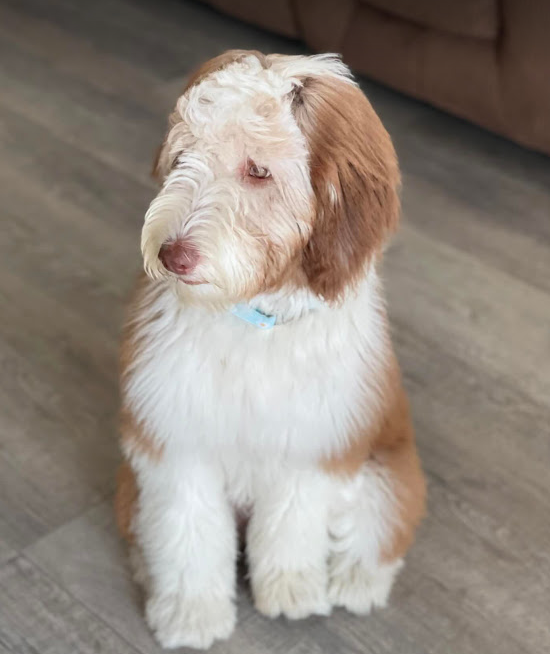
Sheepadoodles generally enjoy a healthy lifespan of 12–15 years. 🐾💖
We take every possible precaution to ensure the health and well-being of our Sheepadoodle puppies, including genetic testings, thorough and ongoing veterinarian exams of both the parent dogs and the puppies, and maintaining a healthy and clean environment. However, it is important to understand that certain health issues may be inherent to the breed and can develop despite the best efforts and care. Check our our blog on Sheeepadoodle Breeding and Genetics.
Here are some common health issues and ways to help minimize the effects or prevent it from happening.
- Bloating: Like all large dogs, sheepadoodles are susceptible to conditions like bloat. This is a common health issue with Old English Sheepdog. Here are some ways to help with bloating:
- Consider feeding your dog using a food puzzle to slow down their eating.
- If you have time, adding home made cooked food to their kibbles or going all homemade might be beneficial.
- Choose limited ingredients and kibbles that are high in protein. Be sure to reference other blogs on healthy recipes.
- Allergies– Sheepadoodles are prone to food and environmental allergies, leading to itching, redness, and infections. Here are some ways to prevent allergies.
- Add a multi vitamin powder to their food. I love this shop and have bought many products from them and have recommended them to many families.
- Add a fish oil- You can get this from the same store.
- Buy food with limited ingredients and high in protein. 🍖🥦
- Joint Problems: 🦴💪Since Sheepadoodles can inherit issues like hip dysplasia and hypothyroidism from their parent breeds, regular vet check-ups and open communication with your breeder are essential for maintaining your dog’s health. By staying proactive with routine check-ups, vaccinations, a healthy diet, and exercise 🏃♀️🐕, you can catch potential health issues early and maintain their well-being. Preventative care not only helps avoid serious conditions but also reduces the need for costly treatments and supports a healthier future. It’s important to keep all sheepadoodles at a healthy weight, moderate and daily exercise, and monitored play time. Doing so, you can prevent major joint issues from happening.
- Base Narrow Canine: As with all doodles, base narrow canines in sheepadoodles can happen. It is a condition where the lower canine teeth are too close together or angled inward, potentially causing pain or injury to the roof of the mouth with the newly grown puppy teeth. After puppy teeth fall out, in majority of cases, the teeth will align correctly when adult teeth come in. For more information, read this blog. We have had 3 cases of puppies with base narrow canine and all three puppies have perfect teeth now as adults.
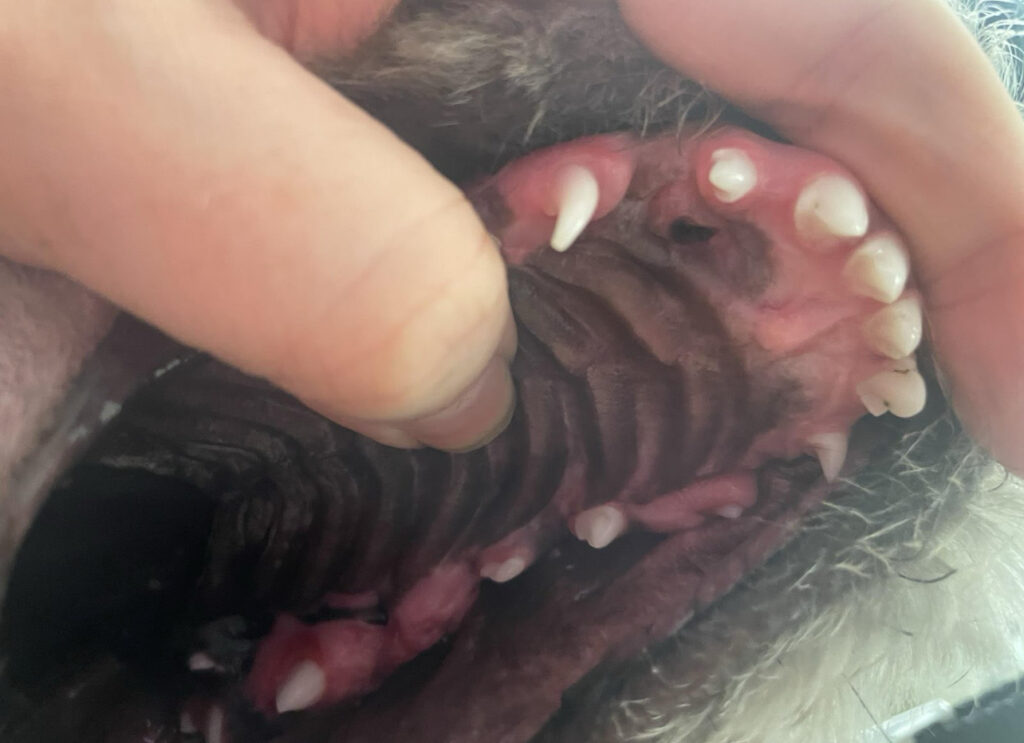
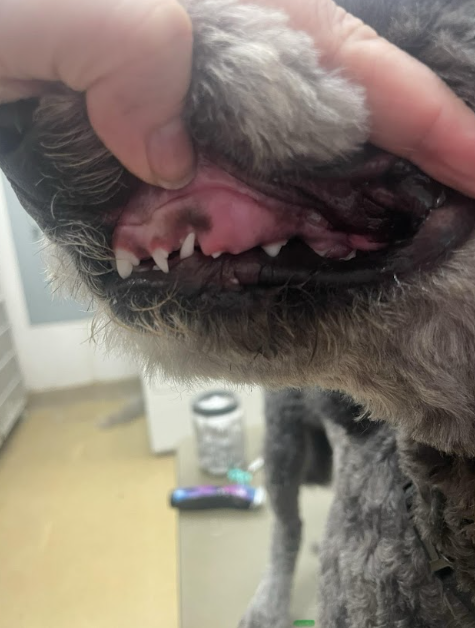
- Ear Infections- Their floppy ears can trap moisture and bacteria, leading to infections. Follow these steps to prevent and treat ear infections.
- Hot spots, also known as acute moist dermatitis, are inflamed, infected areas of a dog’s skin that appear red, moist, and irritated. They are typically caused by excessive licking, scratching, or biting in response to allergies, insect bites, infections, or underlying skin conditions. Hot spots can develop quickly, often becoming painful and spreading if not treated promptly. Follow these steps to treat hot spots:
- Treatment usually involves cleaning the area, put a cone to prevent further licking.
- Applying topical medications to reduce inflammation and prevent infection. This is a silver spray to treat infections. I’ve given my dogs human amoxicillin before and it helped. But, please see your veterinarian for all pet related care.
- Putting them on an anti-flea and tick medication.
- Grooming is also key! Washing them every 6 weeks and brushing them out often can prevent hot spots. ✂️💅
- Being Naughty– (This is not a health condition, but definitely something to consider when you’re buying insurance) Sheepadoodles are often stubborn and super naughty as teenagers. Driven by curiosity and mischief, sheepadoodle puppies can easily get into accidents by chewing on dangerous objects, darting into traffic, or jumping off high surfaces. Their adventurous behavior often leads to unexpected injuries or encounters with hazards around the home or outdoors.
Many different types of pet insurance policies available, so it’s important to do your research and choose a policy that meets your needs and budget. Pet insurance can help cover the costs of vet visits, surgeries, and other treatments, giving you peace of mind and financial protection. But with so many different policies and companies to choose from, how do you know which one is the right one for you and your pet?
Do you need pet insurance?
- Determine your coverage needs: Consider what types of medical treatment your pet is most likely to need. For example, if your pet is prone to certain conditions or has a preexisting condition, you may want a policy that covers those specific treatments.
- Read the fine print: Make sure you understand what is covered and what isn’t covered under the policy. Some policies may have exclusions for certain conditions or treatments for certain conditions or treatment or may have limits on the amount of coverage.
- Compare policies and prices: Shop around and compare policies from different insurers to find the best one for you and your pet. Don’t just focus on price – consider the coverage options and exclusions as well.
- Consider the deductible and co-payments: A policy with a lower deductible (the amount you have to pay before the insurance company covers the rest) may have a higher premium (monthly cost), while a policy with a higher deductible may have a lower premium. Consider which option is best for your budget.
- Check the company’s reputation: Look for a reputable insurer with a good track record of paying out claims. Read reviews and ask for recommendations from other pet owners.
If you decide to not have pet insurance, there are still ways you can prepare for the possibility of unexpected medical costs for your pet.
Here are a few options to consider:
- Set aside money in an emergency fund: Consider setting aside a certain amount of money each month in separate savings accounts specifically for unexpected pet medical costs. This can help you pay for unexpected treatments without having to dip into your regular savings or go into debt.
- Look in CareCredit: CareCredit is a healthcare financing credit care that can be used for veterinary care. It offers low or no-interest financing options, but it’s important to read the terms and conditions carefully and make sure you can afford the monthly payments before using it.
- Ask your veterinarian about payment options: Some veterinarians may offer payment plans or accept credit cards for payment. It’s worth asking if this is an option if you are unable to pay for treatment upfront.
- Consider pet health savings accounts: These are similar to traditional health savings accounts for humans, but for pets. You can contribute pre-tax dollars to the account and use it to pay for qualifying medical expenses for your pet.
Ultimately, whether or not you decide to get insurance for your dog is a personal decision that depends on your individual circumstances and needs. If you are concerned about the potential costs of medicare for your pet, it may be worth considering pet insurance as a way to protect yourself financially.
Because your sheepadoodle is a part of your family, ensuring their health and longevity will bring many years of love and happiness to all 🙂
